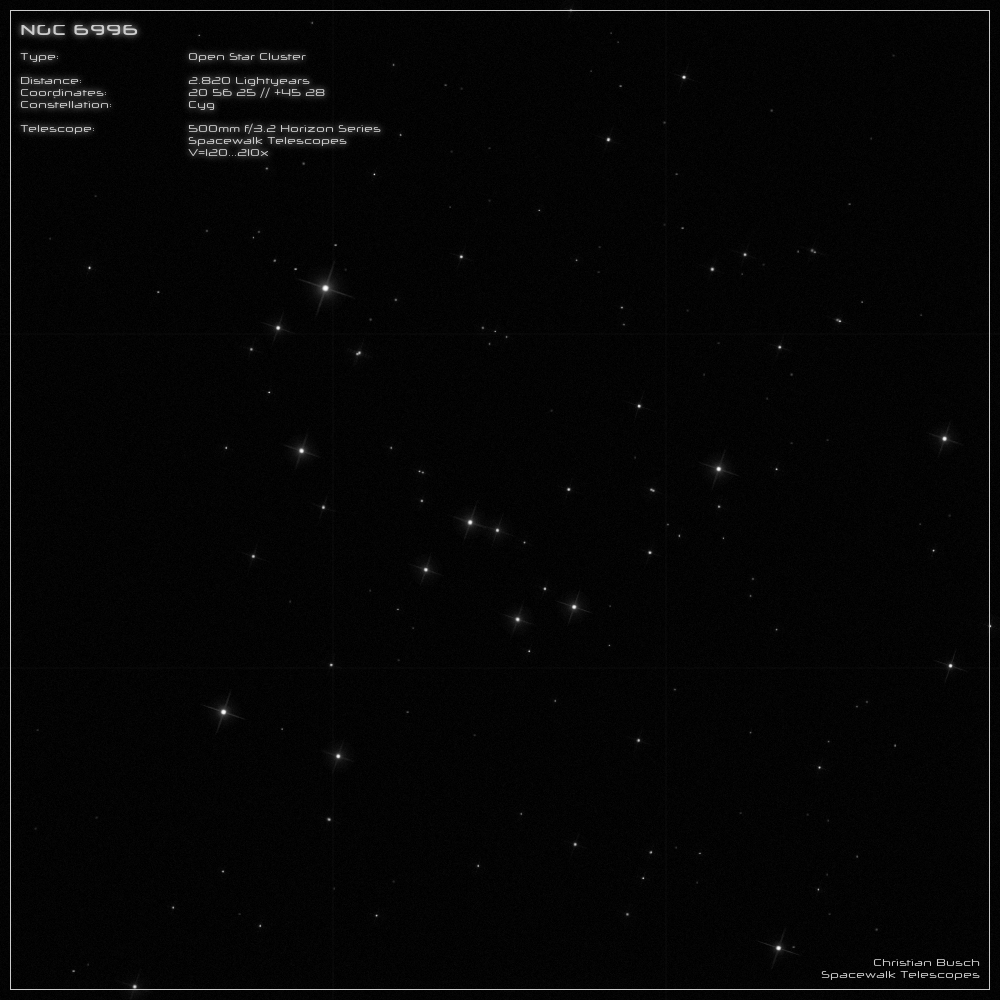NGC 6996, Open Star Cluster
NGC 6996 is a cluster of stars directly north of the well-known North American nebula NGC 7000. In the Revised New General Catalog NGC 6996
and NGC 6997 are interchanged, so you should not be confused by this. Sometimes the two star clusters are even listed at the same position by star
chart programs.
About NGC 6996 only very sparse information can be found. It seems to be not even a real star cluster, but rather a collection of stars, i.e. an asterism.
But according to the data of the latest Gaia release NGC 6996 is located in a distance of 2,800 lightyears (with an uncertainty of 140 lightyears) and
after checking the proper motion, up to 170 stars could belong to this cluster, if it really is one. Dust masses in front of it cause a strong reddening,
which weakens the light of the stars by up to half a magnitude. These dust clouds seem to surround the whole area like a ring - this can also give the
impression of a star cluster. The brightest star with 10mag (directly at the northeastern edge) probably doesn't belong to the cluster, because according
to the latest Gaia release it is 9,500 light-years away from Earth and therefore lies far behind the cluster. The next brighter stars have the 11th magnitude.
Converted to the distance their absolute brightness can therefore be determined to +1.3mag, which makes them about 25x brighter than our Sun.
The apparent extent of NGC 6996 can be estimated to 8 to 9 arcminutes and from this a true diameter of about 7 lightyears can be derived. For an open
star cluster this is a quite normal value.
Maybe in the future new information will be found about this quite memorable collection of stars. Then perhaps also the question can be clarified
whether NGC 6996 is really a star cluster or not.
----------------------------------------------------------------------------------------------------------------------------------------------
In my 20 inch Dobsonian the cluster appears quite loosely scattered and consists of many bright stars. If you use a low magnification, you notice that the
cluster is surrounded by a kind of star-poor zone, similar to a dark ring. In the drawing this can be seen best on the left side. For this reason the cluster is
sometimes called "Bird's Nest". This name is already nearly 100 years old.
The stars of NGC 6996 are of different brightness. The brightest of them form a "calyx". At least this is the shape that seems most memorable to me. The
open cluster is loosely concentrated and gets lost quite fast in the field of view at higher magnification. Therefore it is better to stay at a low magnification.
All in all a nice sighting, even if there are certainly more visually appealing star clusters.

